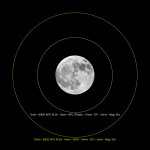Hello All,
I’m new to birding and realized that for seabirds the use of a scope would make identifying them a lot easier! I can’t quite grasp the idea behind the wide angle versus regular eyepiece choices. With wide angle it seems you get constant apparent FOV across the zoom range, while the regular ones it decreases with increasing power. I’m not sure how the wind angled can keep a constant apparent FOV.
Anyway, what are the pros and cons of the two approaches. Any assistance would be most appreciated. Thanks!
Tsutomu
I’m new to birding and realized that for seabirds the use of a scope would make identifying them a lot easier! I can’t quite grasp the idea behind the wide angle versus regular eyepiece choices. With wide angle it seems you get constant apparent FOV across the zoom range, while the regular ones it decreases with increasing power. I’m not sure how the wind angled can keep a constant apparent FOV.
Anyway, what are the pros and cons of the two approaches. Any assistance would be most appreciated. Thanks!
Tsutomu





